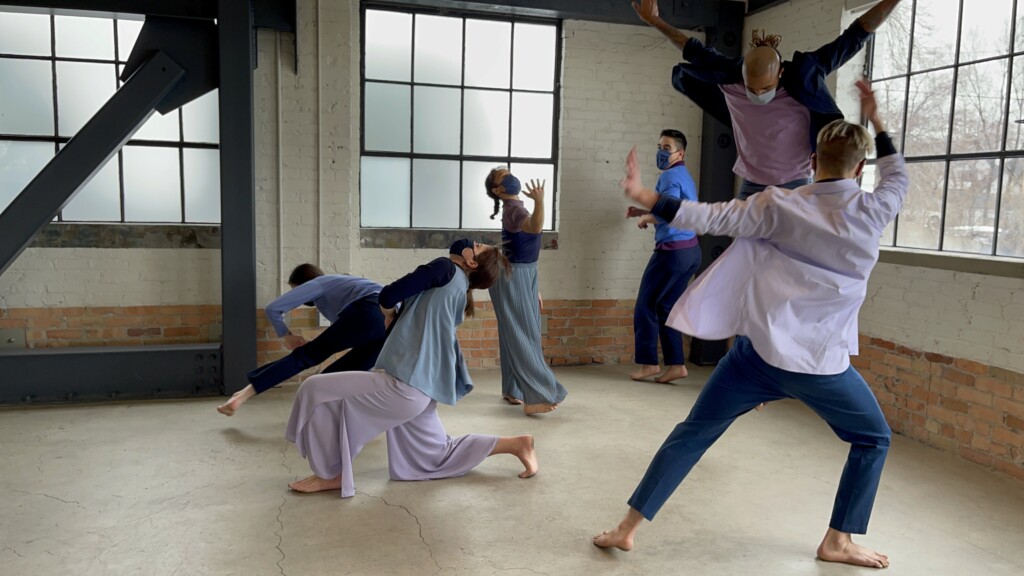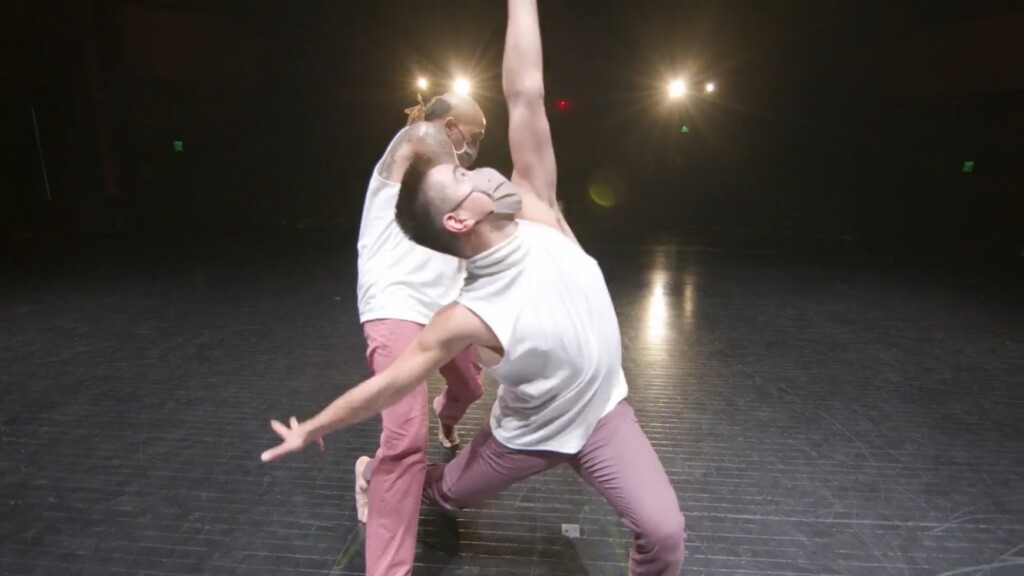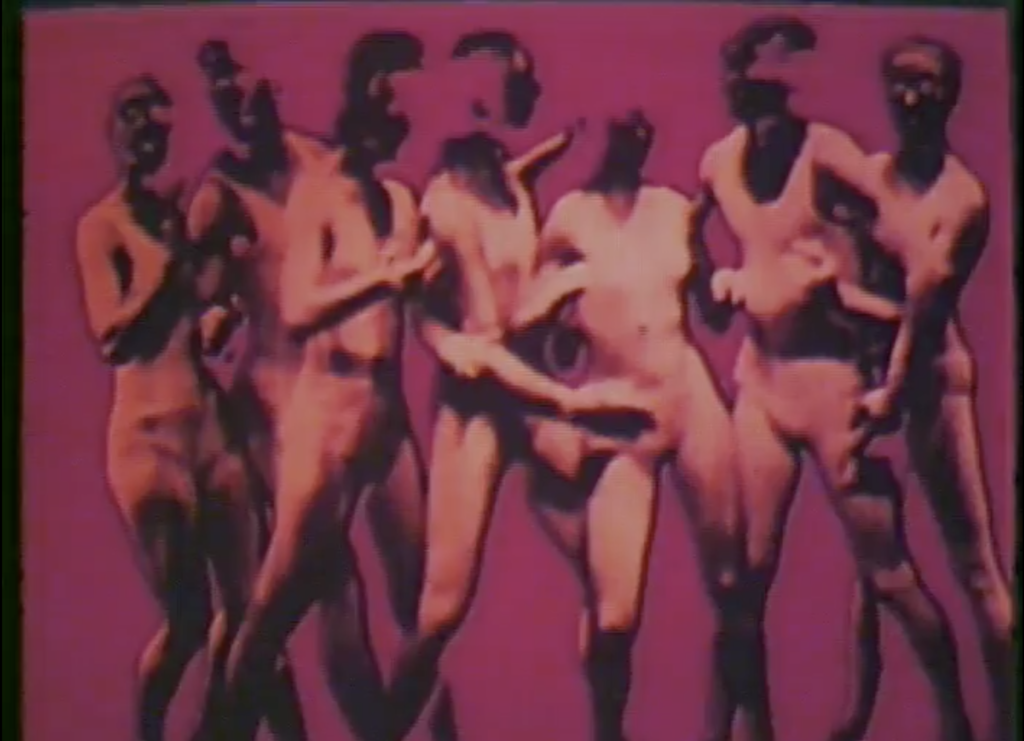What appears to be a genuinely holistic appreciation of the potential of home in all of its meta dynamics will anchor the forthcoming premiere of Home Run by the internationally renowned Ririe-Woodbury Dance Company.
It is worth thinking about this hour-long concert as a documentary shorts program one might see at a film festival. Set to premiere as a live-stream event on Feb. 11 (tomorrow) at 6 p.m., the concert will comprise short films of works created specifically for the screen. Interspersed with two world premieres by local choreographers and three short pieces created by the company dancers (including one as a live, real-time performance) will be excerpts from a 1970 film featuring a work created for camera by company cofounder Joan Woodbury.

Every element for Home Run is locally cultivated. Daniel Charon, Ririe-Woodbury’s artistic director, has filmed, scored and produced Winter’s Light. Costumes were designed by former company member Melissa Younker. Molly Heller, a choreographer and dance faculty member at The University of Utah, has set Full View for all six Ririe-Woodbury Dance Company artists as well as five members of the multidisciplinary Heartland Collective, which she directs. The score for Heller’s piece was created by Michael Wall and Nick Foster, well-known local musicians who also are part of the Salt Lake Electric Ensemble, a group with which Ririe-Woodbury has collaborated previously. The locally based Wonderstone Films has produced the short films for the pieces, with the exception of Winter Light and Don’t Chew With Your Mouth Open, a piece created by dance artists Nicholas Jurica and Corinne Lohner, which was filmed in their respective homes by Alec Lyons, formerly with Spy Hop Productions but now director of photography at Bl nk Sp ce.
“We learned a lot through the fall performance [Double Take concert with Repertory Dance Theatre],” Charon explains. “We invested funding and energy into creating and documenting dances to be filmed on screen.”
At a brisk pace spanning just 60 minutes, viewers will see a versatile and diverse approach to setting work specifically for the medium of film from the choreographers as well as the dancers. Thus, the Home Run film will have a premiere very close to the film festival experience with the added performance of a virtual installation work being created live on stage by Ririe-Woodbury dancers Megan McCarthy and Dominica Greene at the Rose Wagner Center for Performing Arts. The Feb. 11 premiere will be narrated live with real-time exchanges with the artists. Home Run also will be available on demand from Feb. 13 through March 11. Tickets are required for the premiere as well as on-demand options.
Heller’s work for 11 dancers responds to the dynamics of the past year where the boundaries have shifted between our private and public spaces, at home and outside; in natural environments and even artificial spaces such as the stage. Heller approached the work as setting a series of overlapping solos made for the home but then performed on stage and recorded by the Wonderstone Films crew.

“Molly [Heller] had been on my radar and the mission of the Heartland Collective fit into the organic and collaborative theme of home for this program,” Charon says. “When we started in July, we did not know what was going to happen because this concert originally would have been at the Capitol Theatre [in downtown Salt Lake City] but everybody was so flexible and nimble in adapting to the process.”
As the piece developed, Heller started to think about how to “contain and house the movement” that she collaborated with the 11 dancers in creating distinct perspectives not just about home but also about the meaning of localization. She says that the work emerged as an “amalgamation” or hybrid — not specifically dance created for the screen or stage. In the pandemic, as she explains, some things have become more private but then other things which used to be private also are now public. Heller mentions how by walking through the neighborhood one could glimpse, for example, people eating dinner in their homes. Heller tapped into a surrealistic perspective, by taking a “wall off the house” and creating a “mock room in the middle of a field,” with a ladder and cloud shapes above. With that in mind, rehearsals for Heller’s piece occurred in various spots indoors and outdoors, including a park.
Charon set Winter’s Light as a companion work to Autumn Sun, a piece the company premiered last fall. This latest work encompasses some of the trademark inspirations for Charon, from literary and technological perspectives. On one hand, he is moved by a quote from Dame Edith Sitwell, which appeared in her autobiographical Taken Care Of, which was published posthumously in 1965: “Winter is the time for comfort, for good food and warmth, for the touch of a friendly hand and for a talk beside the fire: it is the time for home.” On another, he does not fixate on a particular space, as he sets the piece with an architectural adventure in mind, inspired in part by Matthew Frederick’s 2000 book 101 Things I Learned in Architecture School.
Charon, whose master’s degree combined choreography and integrated media, took sole command of the process from conception to the filming and editing of the work. In addition, he set the musical score drawing from pieces he wrote in the mid-2000s but which never had been attached to a specific choreographed composition. Focused on capturing a seamless steadicam effect where one performer passes off to another, Charon says that he wants to recreate the energy of the walk-and-talk “cold opens” of the popular West Wing television series.
“I wanted to capture a 360-degree view and so we were inspired to move out of the theater space,” Charon says. With a hand-held gimbal, he captured many spaces including the new contemporary arts gallery at The Monarch studio, arts and entertainment complex in downtown Ogden.
Meanwhile, the three pairs of Ririe-Woodbury Dance Company have set the bar for their own creative home runs. For Woes, a live installation piece that will unfold during the streaming premiere on stage in The Rose, McCarthy and Greene seek to create their experience in a “jagged, unsettled, implication, underwater atmosphere,” contemplating the questions of “If I spread my pain onto you, will I absolve myself of it? How do we unload, and whose responsibility is it to bear that weight?”
Jurica and Lohner subvert the whole notion of privacy at home in Don’t Chew With Your Mouth Open, with Jurica filmed in his home watching television and Lohner eating a burger in hers. Lyons filmed their work and the sounds of the tasks comprise the audio design for the film.

And Again is a duet, created and performed by Ririe-Woodbury dance artists Bashaun Williams and Fausto Rivera, with an original score by Wall. Captured on camera by Wonderstone Films, the work explores the response to the monotonous fatigue that emerges during long periods of quarantine. Williams, incidentally, will be leaving Ririe-Woodbury at the end of the season after a decade with the company.
Reminding that the idea of creating dance for camera is not a recent development, Charon includes an excerpt from Wash, the 1970 film, produced by Stanley and Judith Hallet and directed by Woodbury. “The film is playful and is an amazing analog version of video effects,” Charon says. “It is a great example of diffusion of technology and screen dance as a burgeoning mode of expression — a fascinating thing to watch.” While Home Run contains an excerpt from the film, Ririe-Woodbury also will provide a link to the entire film on its website.
The concert film is funded in part by the CARES Act and the Utah State Legislature through Utah Arts & Museums. This show is sponsored by Nancy and Richard Potashner.
For tickets and more information, see the Ririe-Woodbury Dance Company website.
